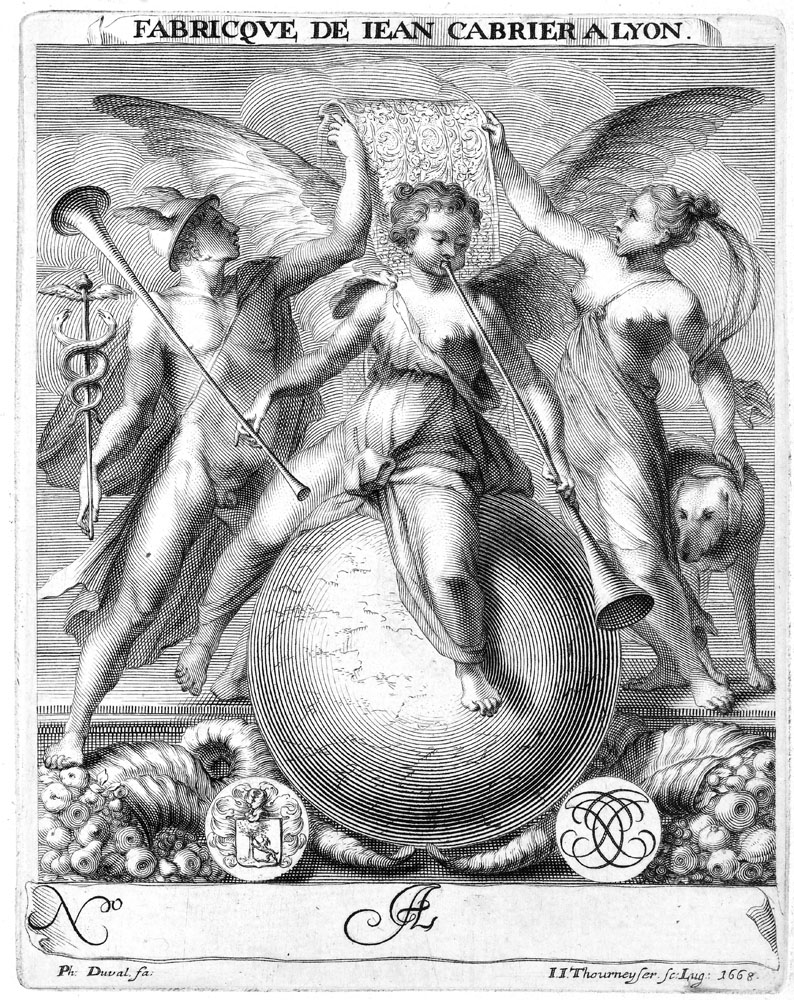XCIII Johann Jacob Thourneysen the Elder (continued)

Thourneysen spent a long period in Lyon where he worked with the publisher François I Cars and made prints after the works of contemporary artists including Thomas Blanchet and Charles Dauphin. In 1672 he engraved a grand-scale portrait of Camille de Neufville, Archbishop of Lyon. In addition to portraits and book illustrations Thourneysen specialised in engraving Étiquettes de fabricants et de marchands. The plate of the Huguenot silk manufacturer lettered Fabricque de Jean Cabrier à Lyon after Philippe Duval dated 1668 is a fine example of such a label. The figures of Mercury, Fame and Fidelity, conveys the message that the goods will be delivered with speed and reliability. The label would have been attached to the fabrics or to the bolts of cloth. Below in the margin the space is blank, and this would have been filled in with the order details, presumably a number, name and address. These provide remarkable historical evidence of the commercial activities of the inhabitants of the city.
Thourneysen was also employed by Joachim von Sandrart to produce plates for his Teutsche Academie, Nuremberg 1679. He engraved one of the most famous sculptures of them all the Laocoon following a drawing by Sandrart of the old man grappling with the large snake but without the two sons. Among the Mitarbeiter that Sandrart employed, the printmakers were mainly from Augsburg and Nuremberg, although the exceptions were Richard Collin who worked in Antwerp and Brussels, and Conrad Meyer and Thourneysen who were Swiss.
Unsurprisingly, Thourneysen worked in a French manner of engraving. His portrait of Charles Emanuel II, Duke of Savoy engraved in Lyon in 1673 is lettered “delineavit et sculpsit” and resembles the work of Robert Nanteuil. He was also clearly influenced by the work of Claude Mellan “inventeur de sa nouvelle manière de graver à une seule taille”. Several of his prints are engraved in this manner such as his plate of the nymph (or Venus) with the shell after a drawing by Sandrart for the Teutsche Academie.
Published in 2020
Compiler: Dieter Beaujean
Editor: Simon Turner
ISBN: 978-94-91539-68-8
316 pp.

